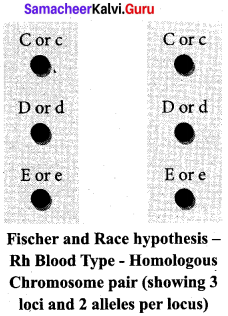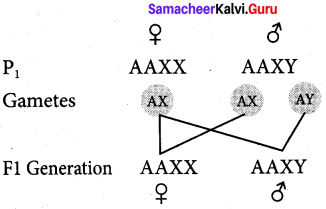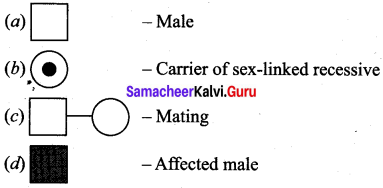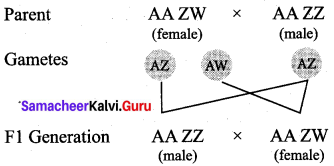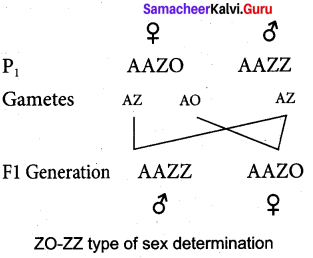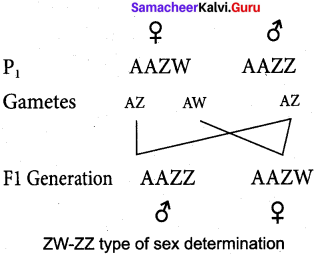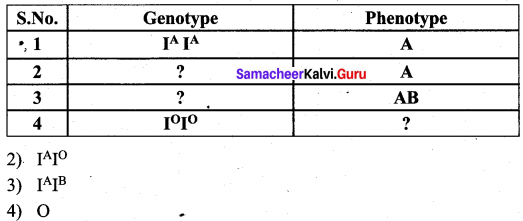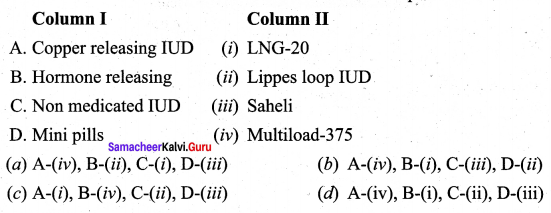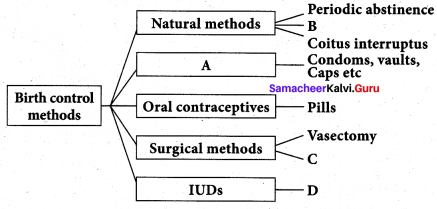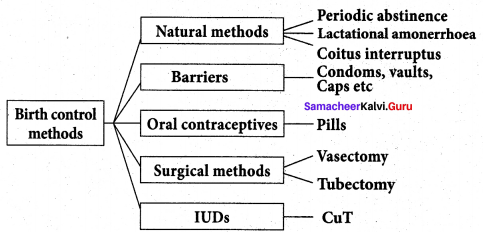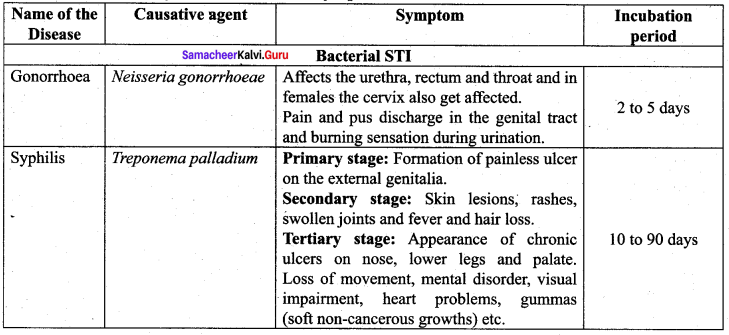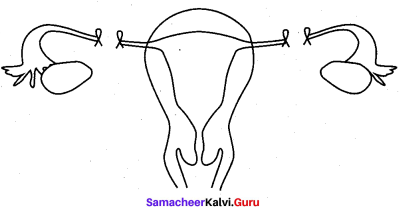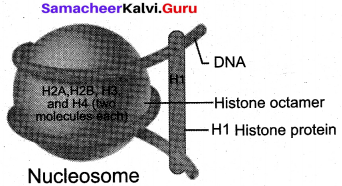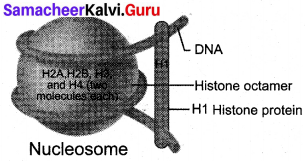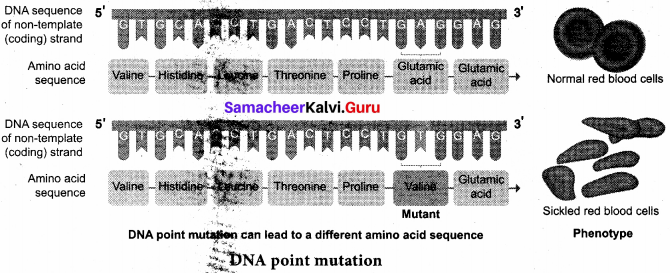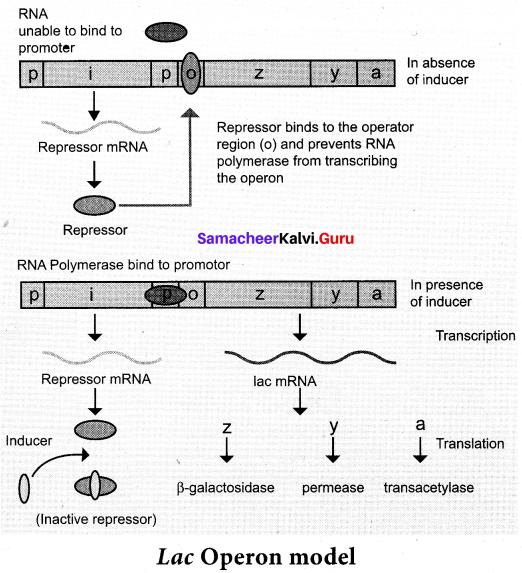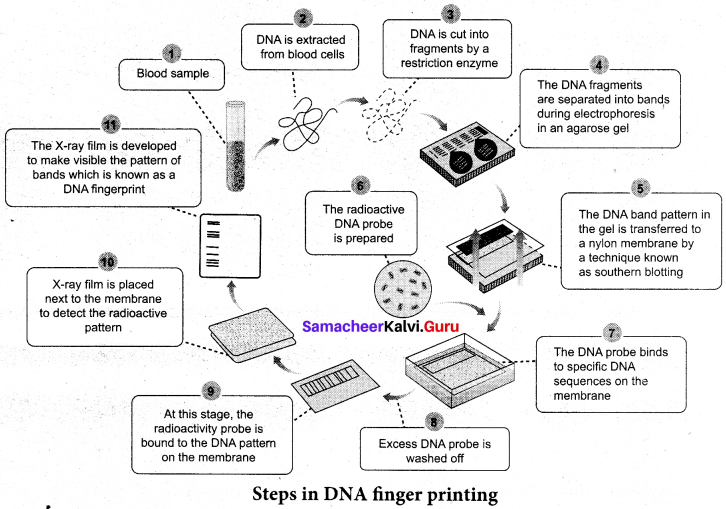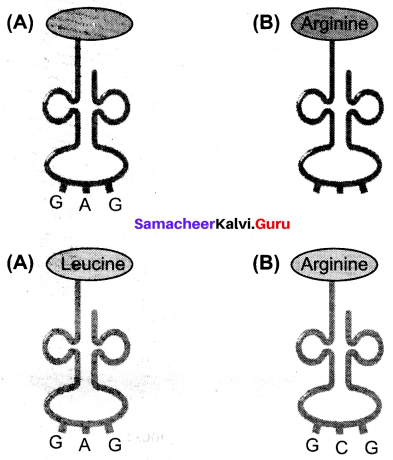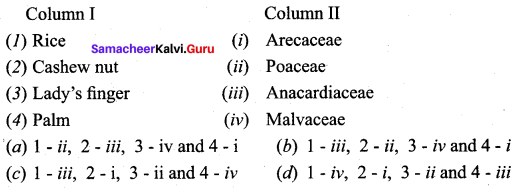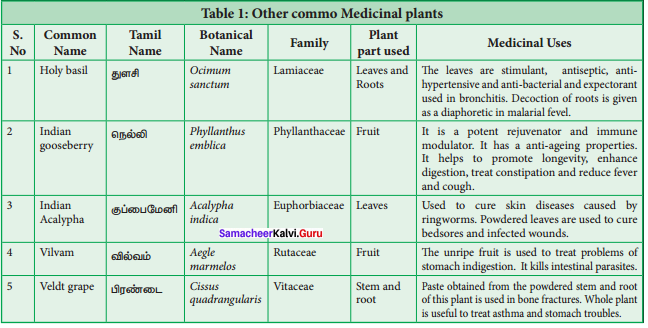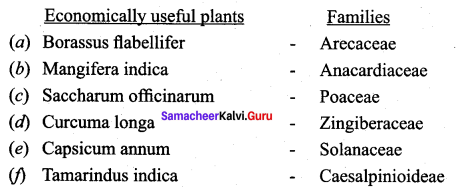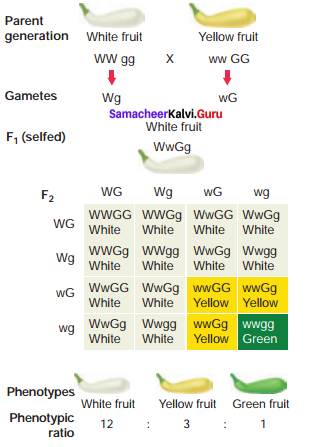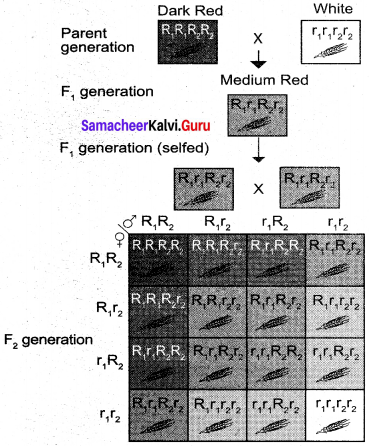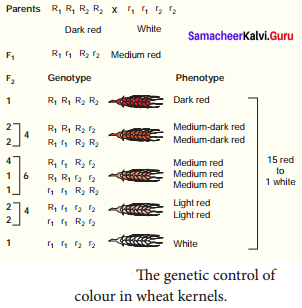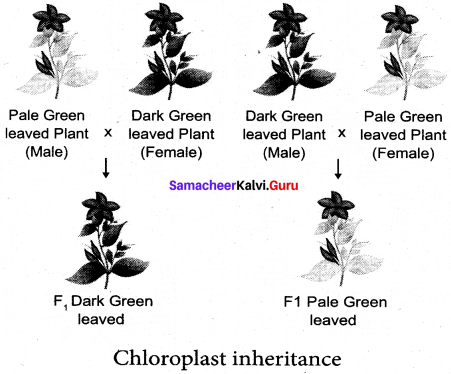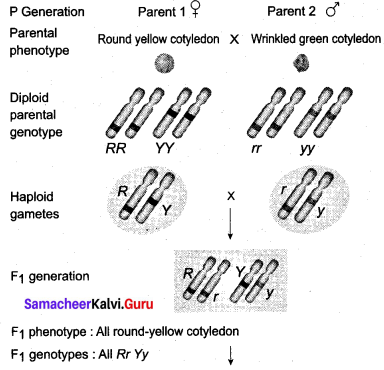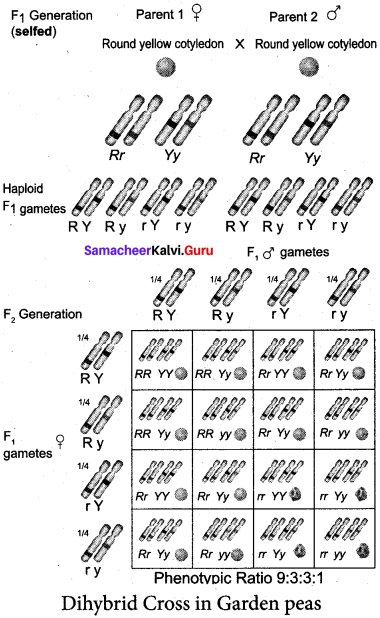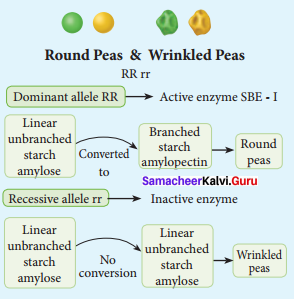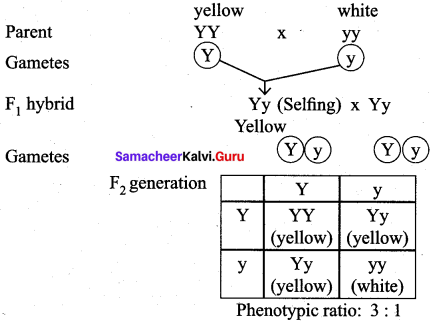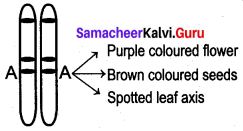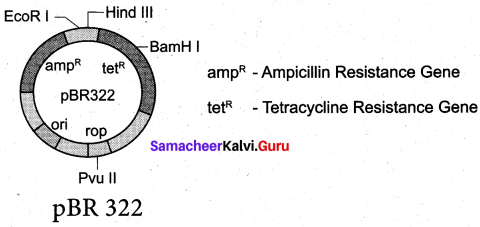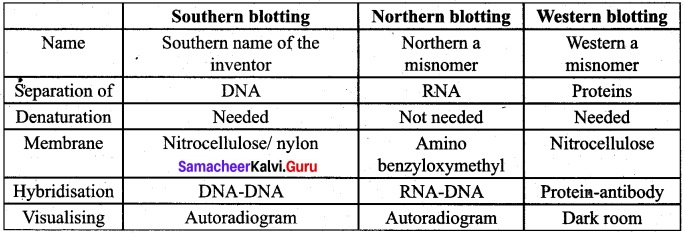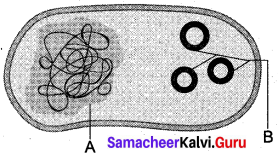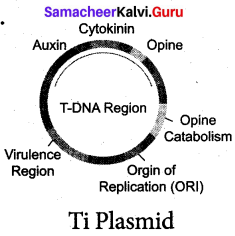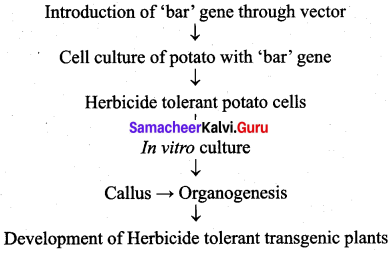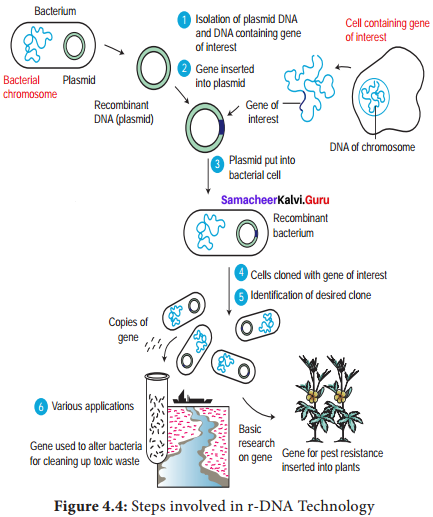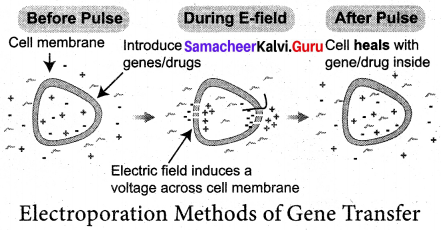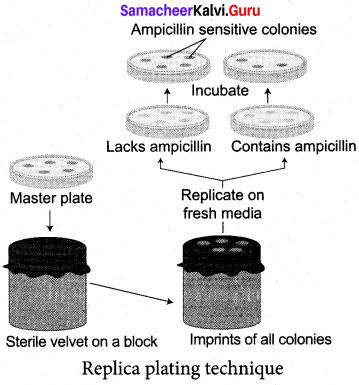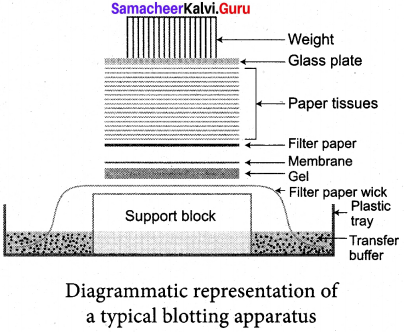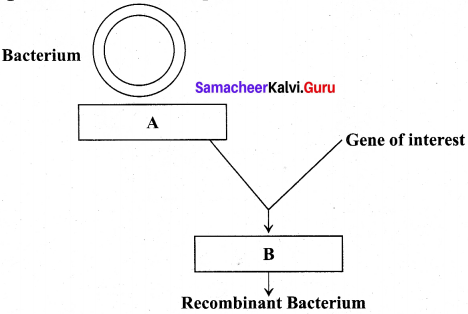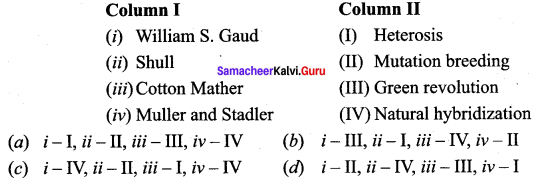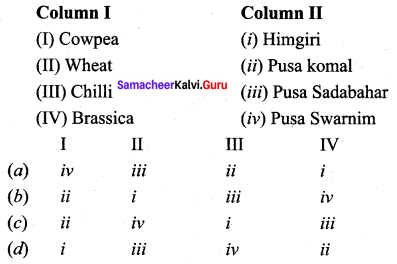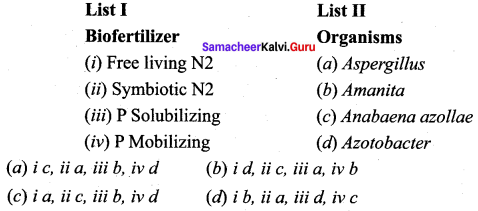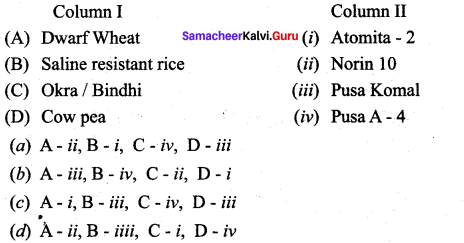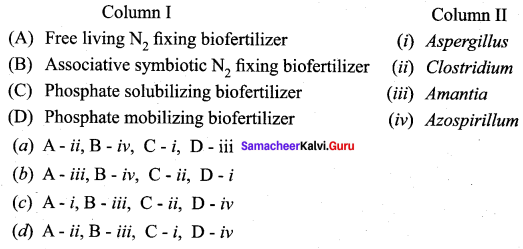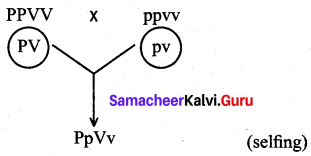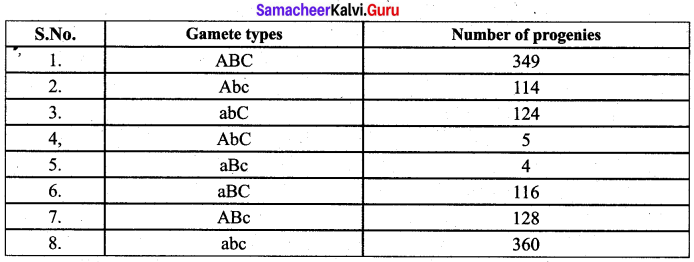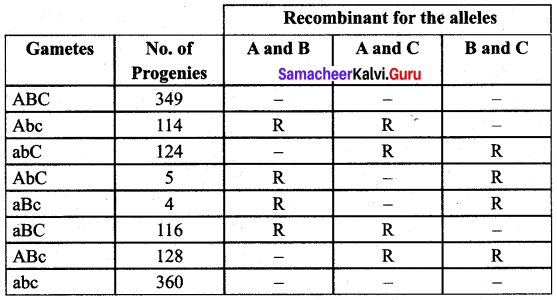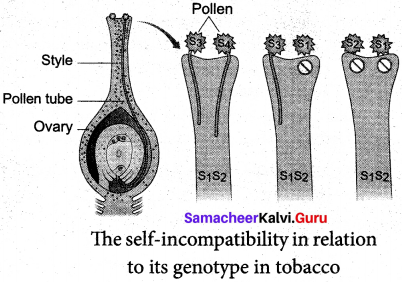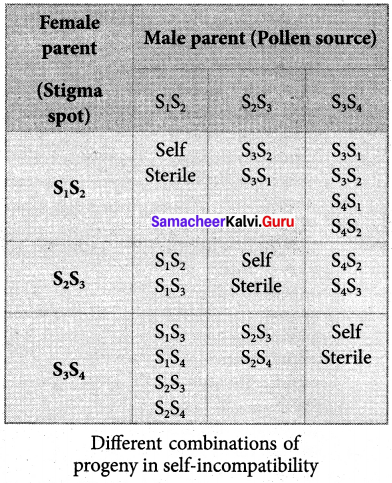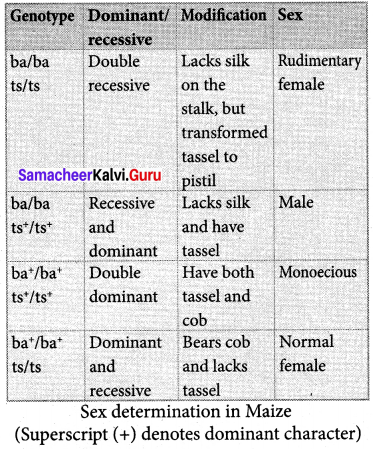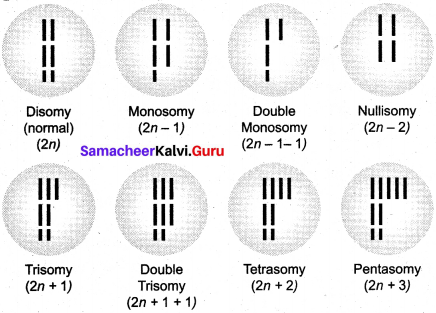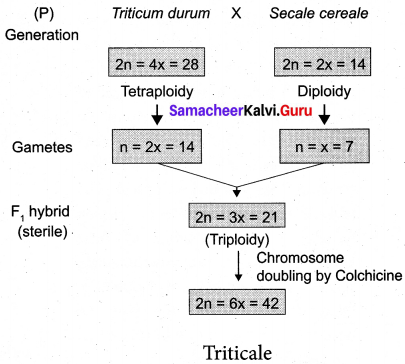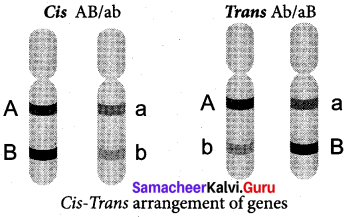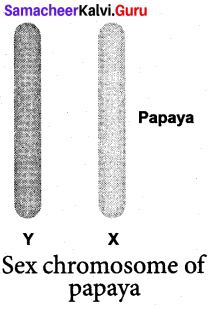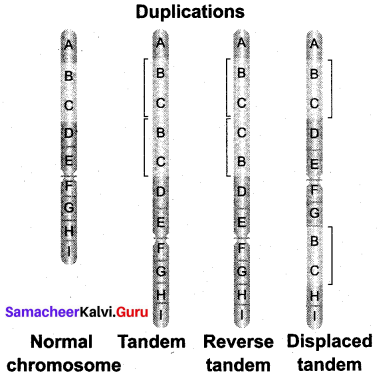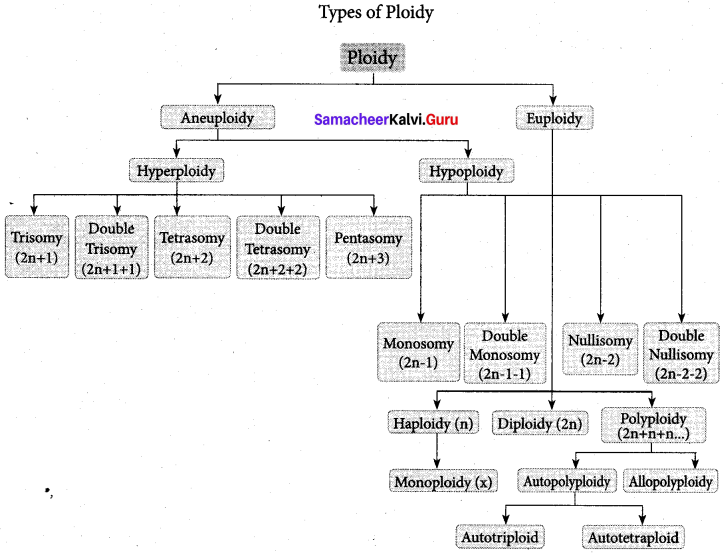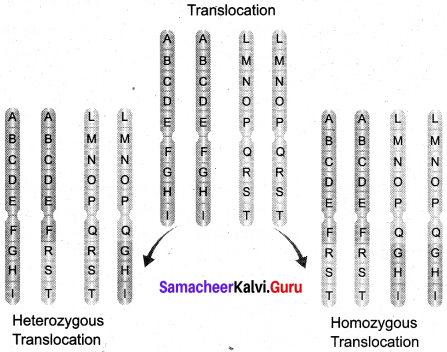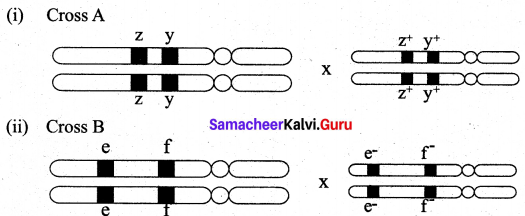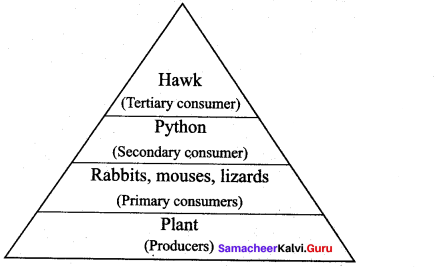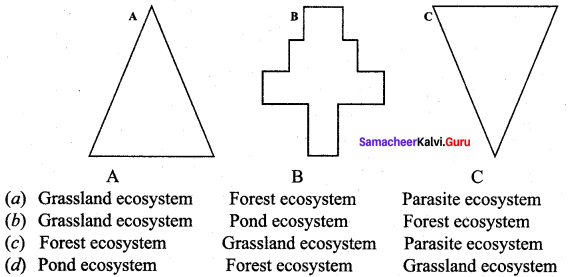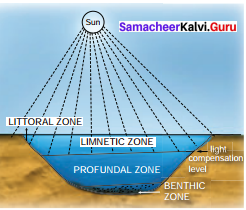Enhance your subject knowledge with Tamilnadu State Board Solutions for 11th Commerce Chapter 6 Money Market Questions and Answers and learn all the underlying concepts easily. Make sure to learn the subject from Tamilnadu State Board Solutions Chapter 6 Money Market Questions and Answers PDF on a day to day basis and score well in your exams. You can Download Samacheer Kalvi 11th Commerce Book Solutions Questions and Answers are given after enormous research by people having high subject knowledge and for better scoring grade. You can rely on them and prepare any topic of Commerce as per your convenience easily.
Tamilnadu Samacheer Kalvi 12th Commerce Solutions Chapter 6 Money Market
Students those who are looking for Tamilnadu State Board Solutions Chapter 6 Money Market Questions and Answers Concepts can find them all in one place from our site Tamilnadu State Board Solutions. Simply click on the links available to prepare the corresponding topics of Samacheer Kalvi 11th Commerce Book Solutions Questions and Answers easily. Clarify all your queries from chapter wise different questions to be familiar with the kind of questions appearing in the exam. Thus, you can increase your score and get higher grade in the final exam.
Samacheer Kalvi 12th Commerce Money Market Textbook Exercise Questions and Answers
I. Choose the Correct Answer:
Question 1.
The money invested in the call money market provides high liquidity with _____
(a) Low Profitability
(b) High Profitability
(c) Limited Profitability
(d) Medium Profitability
Answer:
(a) Low Profitability
Question 2.
A major player in the money market is the _____
(a) Commercial Bank
(b) Reserve Bank of India
(c) State Bank of India
(d) Central Bank
Answer:
(a) Commercial Bank
Question 3.
Money Market provides _____
(a) Medium-term Funds
(b) Short-term Funds
(c) Long-term Funds
(d) Shares
Answer:
(b) Short-term Funds
Question 4.
Money Market Institutions are _____
(a) Investment Houses
(b) Mortgage Banks
(c) Reserve Bank of India
(d) Commercial Banks and Discount Houses
Answer:
(d) Commercial Banks and Discount Houses
Question 5.
Risk in the Money Market is _____
(a) High
(b) Market Risk
(c) Low Credit and Market Risk
(d) Medium Risk
Answer:
(c) Low Credit and Market Risk
Question 6.
Debt Instruments are issued by Corporate Houses are raising short-term financial resources from the money market are called _____
(a) Treasury Bills
(b) Commercial Paper
(c) Certificate of Deposit
(d) Government Securities
Answer:
(b) Commercial Paper
Question 7.
The market for buying and selling of Commercial Bills of Exchange is known as a _____
(a) Commercial Paper Market
(b) Treasury Bill Market
(c) Commercial Bill Market
(d) Capital Market
Answer:
(c) Commercial Bill Market
Question 8.
A marketable document of title to a time deposit for a specified period may be referred to as a _____
(a) Treasury Bill
(b) Certificate of Deposit
(c) Commercial Bill
(d) Government Securities
Answer:
(b) Certificate of Deposit
Question 9.
Treasury Bills commands _____
(a) High Liquidity
(b) Low Liquidity
(c) Medium Liquidity
(d) Limited Liquidity
Answer:
(a) High Liquidity
Question 10.
Government Securities are issued by agencies such as _____
(a) Central Government
(b) State Governments
(c) Semi-government Authorities
(d) All of the above
Answer:
(d) All of the above
II. Very Short Answer Questions
Question 1.
Define the term “Money Market”.
Answer:
According to Crowther, ’’the money market is the collective name given to the various firms and institutions that deal in the various grades of near money”.
Question 2.
What is commercial bill market?
Answer:
The Commercial Bill is an instrument drawn by a seller of goods on a buyer of goods. A bill of exchange issued by a commercial organization to raise money for short-term needs. These bills are of 30 days, 60 days and 90 days maturity.
Question 3.
What is a CD market?
Answer:
Certificate of Deposits are short-term deposit instruments issued by banks and financial institutions to raise large sums of money. The Certificate of Deposit is transferable from one party to another. Due to their negotiable feature, they are also known as negotiable certificate of deposit.
Question 4.
What is Government Securities Market?
Answer:
A market whereby the Government or gilt-edged securities can be bought and sold is called ‘Government Securities Market’.
Question 5.
What are the Instruments of Money Market?
Answer:
- Treasury Bills in the Treasury Market
- Money at Call and Short Notice in the Call Loan Market
- Commercial Bills and Promissory Notes in the Bill Market
Now in addition to the above, the following new instruments come into existence:
- Commercial Papers
- Certificate of Deposits
- Inter-Bank participation Certificates
- Repo Instruments
Question 6.
Explain the two oldest money markets.
Answer:
- Treasury Bills- These are very popular and enjoy a higher degree of liquidity since they are issued by the Government.
- Commercial Bills- It is an instrument drawn by a seller of goods on a buyer of goods.
Question 7.
What do you mean by Auctioning?
Answer:
A method of trading whereby merchants bid against one another and where the securities are sold to the highest bidder is known as‘auctioning’.
Question 8.
What do you mean by Switching?
Answer:
The purchase of one security against the sale of another security carried out by the RBI in the secondary market as part of its open market operations is described as ‘Switching’.
III. Short Answer Questions
Question 1.
What are the features of Treasury Bills?
Answer:
- Issuer
- Finance Bills
- Liquidity
- Vital Source
- Monetary Management
Question 2.
Who are the participants of Money Market?
Answer:
- Government of different countries
- Central Banks of different countries
- Private and Public Banks
- Mutual Funds Institutions
- Insurance Companies
- Non-Banking Financial Institutions
- RBI and SBI
- Commercial Banks
- State Governments
- Public
Question 3.
Explain the types of Treasury Bills.
Answer:
Treasury Bills are issued to the public and other financial institutions for meeting the short term financial requirements of the Central Government.
Treasury Bills may be classified into three!
They are:
- 91 days Treasury Bills
- 182 days Treasury Bills
- 364 days Treasury Bills
Question 4.
What are the features of Certificate of Deposit?
Answer:
- Document of title to time deposit
- It is unsecured negotiable instruments
- It is freely transferable by endorsement and delivery
- It is issued at discount to face value
- It is repayable on a fixed date without grace days
Question 5.
What are the types of Commercial Bill?
Answer:
- Demand and Usance Bills
- Clean bills and documentary Bills
- Inland bills and Foreign Bills
- Indigeneous Bills
- Accommodation and supply Bills
IV. Long Answer Questions
Question 1.
Define Money Market and Capital Market. Explain the difference between the Money -Market and Capital Market.
Answer:
(i) Money Market Definition: According to Crowther, “the money market is the collective name given to the various firms and institutions that deal in the various grades of near money.”
(ii) Capital Market Definition: According to Aran K. Datta, capital market may be defined as “a complex of institutions investment and practices with established links between the demand for and supply of different types of capital gains”.
| S.No. | Features | Money Market | Capital Market |
| 1. | Duration of Funds | It is a market for short-term loanable funds for a period of not exceeding one year. | It is a market for long-term funds exceeding period of one year. |
| 2. | Supply of Fupds | This market supplies funds for financing current business operations working capital requirements of industries and short period requirements of the government. | This market supplies funds for financing the fixed capital requirements of trade and commerce as well as the longterm requirements of the government. |
| 3. | Deals with Instruments | It deals with instruments like commercial bills (bill of exchange, treasury bill, commercial papers etc.). | It deals with instruments like shares, debentures, Government bonds, etc., |
| 4. | Money Value | Each single money market instrument is of large amount. A treasury bill is of minimum for one lakh. Each certificate of deposits or commercial paper is for minimum of Rs 25 lakh. | Each single capital market instrument is of small amount. Each share value is Rs 10. Each debenture value is Rs 100. |
| 5. | Role of Major Institution | The central bank and commercial banks are the major institutions in the money market. | Development banks and Insurance companies play a dominant role in the capital market. |
Question 2.
Explain the characteristics of Money Market.
Answer:
- Short-term Funds: It is a market purely for short-term funds or financial assets called near money.
- Maturity Period: It deals with financial assets having a maturity period upto one year only.
- Conversion of Cash: It deals with only those assets which can be converted into cash readily without loss and with minimum transaction cost.
- No Formal Place: Generally, transactions take place through phone, i.e., oral communication. Relevant documents and written communications can be exchanged subsequently.
- Sub-markets: It is not a single homogeneous market. It comprises of several sub-markets each specialising in a particular type of financing.
- Role of Market: The components of a money market are the Central Bank, Commercial Banks. Commercial banks generally play a dominant role in this market.
- Highly Organized Banking System: The Commercial Banks are the nerve centre of the whole money market. They are the principal suppliers of short-term funds.
- Existence of Secondary Market: There should be an active secondary market for these instruments.
- Demand and Supply of Funds: There should be a large demand and supply of short-term funds.
- Wholesale Market: It is a wholesale market and the volume of funds or financial assets traded in the market is very large.
- Flexibility: Due to greater flexibility in the regulatory framework, there are constant endeavours for introducing new instruments.
- Presence of a Central Bank: The central bank keeps their cash reserves and provides them financial accommodation in difficulties by discounting their eligible securities.
Question 3.
Explain the Instruments of Money Market.
Answer:
(i) Treasury Bills: Treasury bills are very popular and enjoy a higher degree of liquidity since they are issued by the Government. A Treasury bill is nothing but a promissory note issued for a specified period stated therein. The Government promises to pay the specified amount mentioned therein to the bearer of the instrument on the due date. The period does not exceed a period of one year.
(ii) Certificate of Deposits: Certificate of Deposits are short-term deposit instruments issued by banks and financial institutions to raise large sums of money. The Certificate of Deposit is transferable from one party to another. Due to their negotiable feature, they are also known as negotiable certificate of deposit.
(iii) Commercial Bills: The Commercial Bill is an instrument drawn by a seller of goods on a buyer of goods. It possesses the advantages like self-liquidating in nature, recourse to two parties, knowing exact date of transactions, transparency of transactions etc.,
Question 4.
Explain the features and types of Commercial Bills.
The features of the Commercial Bills are as follows:
Answer:
- Drawer
- Acceptor
- Payee
- Discounter
- Endorser
- Assessment
- Maturity
- Credit Rating
Types:
- Demand and Usance Bills: A demand bill is one wherein no specific time of payment is mentioned. So, demand bills are payable immediately when they are presented to the drawee.
- Clean Bills and Documentary Bills: Bills that are accompanied by documents of title to goods are called documentary bills. Clean bills are drawn without accompanying any document.
- Inland Bills and Foreign Bills: Bills that are drawn and payable in India on a person who is resident in India are called inland bills.
- Indigeneous Bills: The drawing and acceptance of indigenous bills are governed by native custom or usage of trade.
- Accommodation and Supply Bills: Accommodation bills are those wrhich do not arise out of genuine trade of transactions.
Question 5.
What are the features of Government Securities?
Answer:
- Agencies: Government securities are issued by agencies such as Central Government State Governments, semi-government authorities like local Government authorities.
- RBI Special Role: RBI takes a special and an active role in the purchase and sale of these securities as part of its monetary management exercise.
- Nature of Securities: Securities offer a safe avenue of investment through guaranteed payment of interest and repayment of principal by the Government.
- Liquidity Profile: The liquidity profile of gilt-edged securities varies. Accordingly liquidity profile of securities issued by Central Government is high.
- Tax Rebate: A striking feature of these securities is that they offer wide-range of tax incentives to investors.
- Market: As each sale and purchase has to be negotiated separately, the Gilt-Edged Market is an Over-The-Counter Market.
- Forms: The securities of Central and State Government take such forms as inscribed stock or stock certificate, promissory note and bearer bond.
- Participants: The participants in Government securities market include the Government sector comprising Central and State Governments
- Trading: Small and less active, banks and corporate holders who purchase and sell Government securities on the stock exchanges participate in trading.
- Issue Mechanism: The Public Debt Office (PDO) of the RBI undertakes to issue government securities.
- Issue opening: A notification for the issue of the securities is made a few days before the public subscription is open.
- Grooming Gradual: It is the acquisition of securities nearing maturity through the stock exchanges by the RBI.
- Switching: It is the purchase of one security against the sale of another security carried out by the RBI in the secondary market as part of its open market operations.
- Auctioning: A method of trading whereby merchants bid against one another and where the securities are sold to the highest bidder.
Samacheer Kalvi 12th Commerce Money Market Additional Questions and Answers
I. A. Choose the Correct Answer
Question 1.
Money market is a market for purely ______
(a) Short-term funds
(b) Long-term funds
(c) Medium-term funds
(d) None of these
Answer:
(a) Short-term funds
Question 2
______ deals with the financial assets and securities whose maturity period does not exceed one year.
(a) Money market
(b) Capital market
(c) Stock exchange
(d) Government bonds
Answer:
(a) Money market
Question 5.
Treasury Bills is an example of ______
(a) Capital market
(b) Money market
(c) Stock exchange
(d) None of these
Answer:
(b) Money market
Question 4
______ is a focal point for Central Bank intervention for influencing liquidity in the company.
(a) Capital market
(b) Money market
(c) Stock exchange
(d) Central Bank
Answer:
(b) Money market
Question 5.
Which is dealt with only those assets which can be converted into cash readily?
(a) Capital market
(b) Money market
(c) Stock exchange
(d) Bank
Answer:
(b) Money market
Question 6.
The issuers of certificate of deposits are ______
(i) commercial banks
(ii) cooperative banks
(iii) private company
(iv) financial institutions
(a) (i) and (ii)
(b) (i) and (iii)
(c) (i) and (iv)
(d) (ii) and (iii)
Answer:
(c) (i) and (iv)
B. Fill in the blanks:
- A market for the purchase and sale of Treasury Bills is known as _______
- Bills which are drawn and payable in India on a person who is resident of India are called _______
Answers:
- Treasury Bills Market
- Inland bills
II. Very Short Answer Questions
Question 1.
What is Grooming Gradual?
Answer:
Acquisition of securities nearing maturity through the stock exchanges by the RBI in order to facilitate redemption is described as ‘grooming’.
Question 2.
What is Indigenous Bills ?
Answer:
The drawing and acceptance of indigenous bills are governed by native custom or usage of trade.
Question 3.
What is Liquidity Profile?
Answer:
The liquidity profile of gilt-edged securities varies. Accordingly liquidity profile of securities issued by Central Government is high.
Question 4.
Who are Participants?
Answer:
The participants in Government securities market include the Government sector comprising Central and State Governments whose holdings represent governmental transfer of resources.
Question 5.
What is Wholesale Market?
Answer:
It is a wholesale market and the volume of funds or financial assets traded in the market is very large.
Question 6.
Who will subscribe certificate of deposits?
Answer:
Certificate of deposits are subscribed by individuals, corporations, trusts, associations and NRIs. It is a document of title to a time deposit. .
Question 7.
What are the components of money market?
Answer:
The components of a money market are the Central Bank, Commercial Banks, Non-Banking Financial Companies, Discount Houses and Acceptance Houses.
III. Short Answer Questions
Question 1.
What is sub-markets?
Answer:
It is not a single homogeneous market. It comprises of several sub-markets each specialising in a particular type of financing. E.g, Call Money Market, Acceptance Market, Bill Market.
Question 2.
Write any three differences between money market and capital market.
Answer:
| Features | Money Market | Capital Market |
| Duration of Funds | It is a market for short-term loanable funds for a period of not exceeding one year. | It is a market for long-term funds exceeding period of one year. |
| Supply of Funds | This market supplies funds for financing current business operations working capital requirements of industries and short period requirements of the government. | This market supplies funds for financing the fixed capital requirements of trade and commerce as well as the long-term requirements of the government. |
| Deals with Instruments | It deals with instruments like commercial bills (bill of exchange, treasury bill, commercial papers etc.). | It deals with instruments like shares, debentures, Government bonds, etc., |
We as a team believe the information prevailing regarding the Tamilnadu State Board Solutions for 11th Commerce Chapter 6 Money Market Questions and Answers has been helpful in clearing your doubts to the fullest. For any other help do leave us your suggestions and we will look into them. Stay in touch to get the latest updates on Tamilnadu State Board Solutions for different subjects in the blink of an eye.

